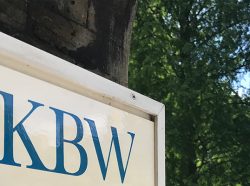The High Court (Eyre J) has handed down judgment in Bouchti v Enfield LBC [2022] EWHC 2809 (Admin), a wide-ranging challenge to the establishment of a low-traffic neighbourhood in the Fox Lane area of Enfield, London (“the LTN”). The Judgment will be of interest to local authorities interested in establishing low-traffic neighbourhoods in the context of efforts to reduce their carbon footprint and to encourage cycling, walking and the use of public transport, and to residents of affected areas who oppose such measures.
The LTN was established on an experimental basis in September 2020, and made permanent in March 2022. The Claimant challenged the decision to make the LTN permanent on 7 grounds, which largely coalesced around complaints that (i) the Defendant had failed adequately to canvass the views of local people prior to making the relevant orders (including a claim that the Defendant failed to consult), and (ii) the Defendant erred in its analysis of the relative merits of the scheme.
Eyre J dismissed each of the 7 grounds of challenge. Although he held that the Defendant had breached statutory requirements in relation to the publication of certain explanatory materials in relation to the LTN (e.g. the statement of reasons for the experimental traffic order was not available on the Council’s website for a couple of months), Eyre J held that the failure caused the Claimant no “substantial prejudice” (the Court can quash a traffic order where it is satisfied that the order “is not within the relevant powers, or that the interests of the applicant have been substantially prejudiced by failure to comply with any of the relevant requirements”: paragraph 36(1)(b) of Schedule 9 to the Road Traffic Regulation Act 1984 (“the RTRA”)).
Eyre J held that the Defendant’s consultation had been adequate, emphasising the fact that the decision to make the LTN had followed an 18-month experiment. At ¶71 Eyre J explained:
“The nature of the exercise being undertaken by the Council here is very significant. It was considering objections in the context of an experiment. . . . The purpose of the six month period for objections following the making of an experimental traffic order is to enable those affected by the order to make objections informed by their practical experience of the measures. The statutory period for objections and the non-statutory consultation exercise were both aimed at obtaining a response based on the actual impact of these measures. It is to the impact of the measures on those affected by them that the intelligent response is to be directed…”
As for the Claimant’s argument that she had been deprived of the opportunity to comment on the data and analysis that the Council relied upon in making its decision, Eyre J held at ¶72 that.
“As has been shown by the result of the subsequent analysis such a critique would have revealed some flaws in the analysis set out in the surveys. However, that did not render the process unfair in circumstances where the experimental orders had been in force for some time; where the balance between the advantages and disadvantages of the proposals was a matter of broad judgement; and where those affected were able to give an intelligent response setting out the effects good or bad on them of the experiment. Turning to specifics: the Claimant’s ability to give a response identifying the adverse effect on her business activities was not dependent on having sight of the data from the surveys rather it was informed by her practical experience”.
Eyre J went on to accept that the Defendant had properly balanced statutory considerations in making the LTN permanent in accordance with the duty under section 122 of the RTRA. The judge also rejected the Claimant’s contention that certain of the Defendant’s officers and councillors had acted with closed minds (in particular through their membership of a Facebook group which advocated for pro-cycling schemes such as low-traffic neighbourhoods), and held that the Defendant’s decision to make the LTN permanent had been rationally open to it on the basis of the available data.
Clive Sheldon KC and Zac Sammour represented the London Borough of Enfield.








